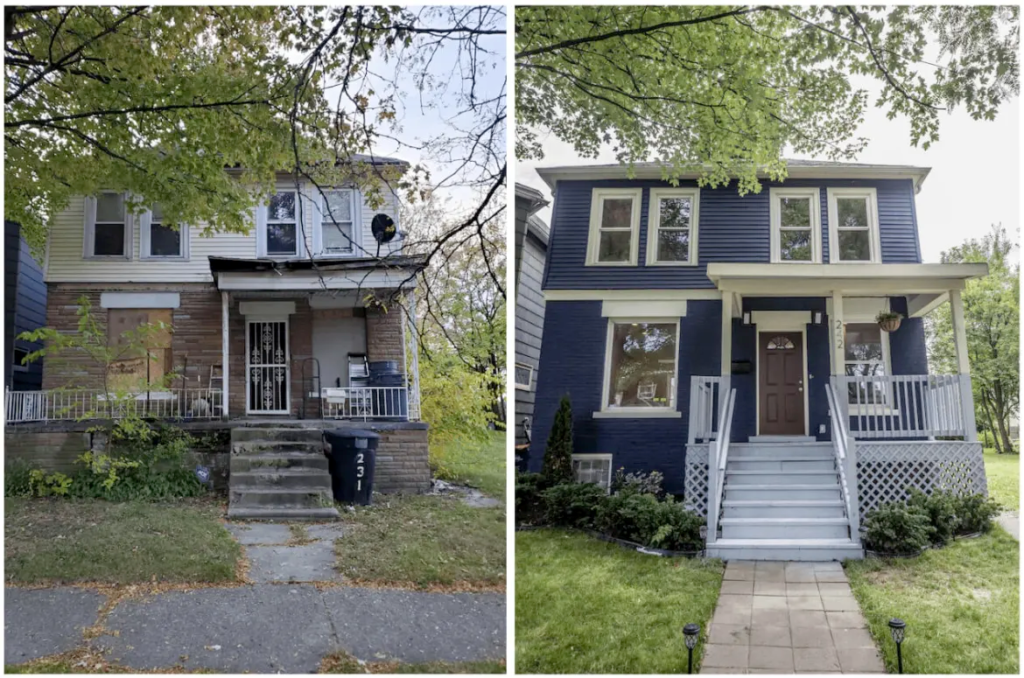
With 80% of office stock built in or before the eighties, many commercial spaces in the market have a huge flipping potential for real estate investors like you.
Large floor, concrete and glass commercial properties are tempting to reinvent from the ground up, as starting fresh may better meet the market’s demands. Even after the industry taking a big hit due to Covid-19, the industry is still trying its best to stay afloat.
Flipping commercial properties shouldn’t involve much hassle and should land you impressive profits… If done right. Before you invest, consider the top factors to ensure a successful commercial property conversion that results in profits—not stuck with a property nobody wants.
Let’s discuss all that below.
Know Commercial Property Types and Uses
Consider the needs of each property type and use. Different commercial property types have different purposes. Before you decide how to flip a commercial property, ask yourself, “Does this property have all the features and factors that’ll make it attractive to buyers?”
For example, office spaces are typically leased for businesses, and retail properties are used as storefronts. Industrial properties are ideal for warehouses or factories, while vacant land is perfect for development projects. Multi-family buildings are often associated with residential housing but can also include spaces for restaurants and local businesses.
If you’re flipping a property for office use, does the property have sufficient parking spaces? If it’s a retail space, can it accommodate heavy foot traffic (if there’s any nearby)? Think of what the end-user will prioritize, because that’s what the buyer will focus on—and so should you.
Moreover, take a look at the trends of each commercial property type. For instance, office spaces became risky investments over the pandemic, where companies implemented hybrid and remote work setups. The trend brought the vacancy rate of office spaces up to 15.4% in Q3 of 2022. In contrast, industrial properties and multi-family buildings only have 4.4% and 6.0% vacancy rate, respectively.
So, take advantage of properties with low vacancy rates or located in areas with limited space for new developments. Those spots offer a good supply and demand situation for your investment, where low-supply, high-demand markets make flipping commercial properties to sell at a high price easy.
Calculate Property Values & Demand for Accurate Pricing
There are several ways to determine a property’s value. You can run with one or be a perfectionist by using each method (we recommend the latter!). Ultimately, you’ll want to choose the methods that make the most sense for your project goals.
By calculating property values, you’ll know how much the property is worth when you sell it. In return, you’ll know how much you should spend to acquire the property and flip it.
#1 Determine the After-Repair Value Using Sales Comps
The After Repair Value (ARV) of a property represents the estimated retail price once it’s renovated. By determining the ARV of a property before purchase and renovation, you’ll know how much you can sell it and see if it’ll generate enough profits.
Now, the easiest way to figure out the ARV is by analyzing comps. To run comps, check similar properties within a quarter to half-mile radius. Identify at least three properties that have sold in the last six months that are comparable in size, type, features, and year built to ensure the most accurate valuation of your potential commercial property.
Next, calculate the average price per square footage of the comps you’ve identified. See how much per square foot they cost, and use that rate to estimate how much your property can charge. Here’s the formula for determining the estimated ARV using comps:
ARV = Average Price per square foot of comps multiplied by the square footage of your property
$1,440,000 = 120 per square foot x 12,000 square feet
In the above example, your commercial property will likely sell for roughly $1,440,000. Is that enough, considering how many renovations you’ll do? Determining the ARV allows you to decide if the property will generate enough returns for you to make a flipping profit.
#2 Capitalization Rate
Capitalization rates (or cap rates) allow you to estimate the return of investment (ROI) of a property. Your buyers will use the cap rate formula to see how much they’ll earn in relation to how much they’ll spend to purchase and operate the commercial space. The higher the cap rate, the more the buyer can earn from it, the more you can potentially charge for the commercial property.
Here’s the cap rate formula to see how much income the property will bring to the owner per year:
Cap Rate = Annual Net Operating Income divided by Price or Value
10% = $150,000 / $1,500,000
There’s no one ideal cap rate because there are a lot of factors that affect a property. However, analysts say a “good” cap rate is around 5% to 10%. Anything below that range is a less risky investment, as it’ll take more time to recover the investment cost—buyers wouldn’t want that, and neither should you.
#3 Estimate Flipping Costs
When planning a renovation, it’s essential to get an estimated repair cost (ERC) so you don’t go over budget and deplete your margins for good flipping profits. After all, no buyer is going to invest in an overpriced property, even if you’ve added all the best features and used the best materials.
To get the ERC, obtain cost projections from professional inspectors and establish a range for the total expense. Don’t just work with one inspector, too. Like how we’d get second opinions from doctors, get multiple opinions from inspectors to have a clear view of the rehabilitation spent.
Here are some tips:
- Two estimates: Ensure that contractors take unforeseen repairs into account. They should also give two price scenarios, so there are fewer surprises during the flipping process.
- Accountability: Hold all subcontractors accountable for the prices they provide. Don’t allow them to change mid-way, or it defeats the whole purpose of estimating your flipping costs.
- Final walkthrough: Conduct a final check with each subcontractor. Double check to ensure that they didn’t leave out any potential cost overruns that’ll dig you into a financial hole.
Unless you’re a contractor yourself, work with licensed contractors to get detailed breakdowns of the cost and a timeline to finish the project. Doing so will ensure that you have a comprehensive budget in place and an accurate timeline that makes sense with the market behaviors to maximize your profits.
Repositioning Commercial Properties for Excellent Flipping Profits
With the expectations that office rental vacancies are going down this 2023, it presents an opportunity for investors to take that leap and flip. Still, it’s crucial to make informed decisions about which properties are worth putting your time into to reap the rewards and avoid the pitfalls of a hasty investment.
There are still a few risks when it comes to investing in commercial real estate (or any investment for that matter), but you can challenge the curve by doing your research and preparing before any purchase. Reposition them if necessary to meet the market’s demands!
Ultimately, choose the right property, anticipate the possible renovation costs, and read the market’s behavior, and you’ll maximize your profits in the end.
Are you interested in flipping commercial real estate and want to know more about it? Join us as a REIA member and attend our upcoming meeting! We also have a newsletter, so you’re never out of the loop.









